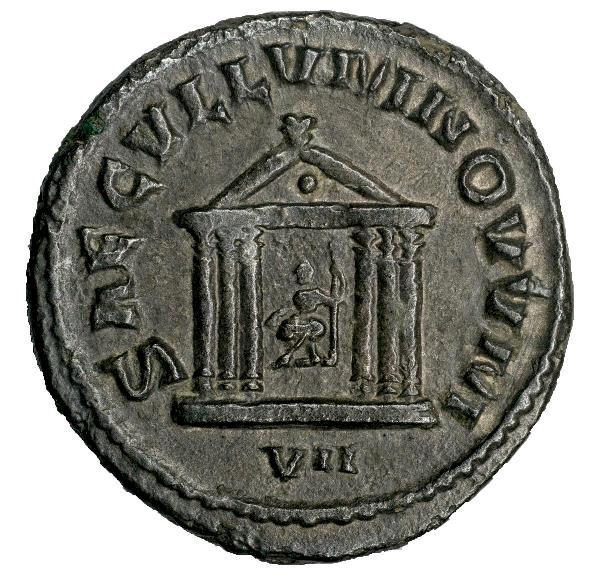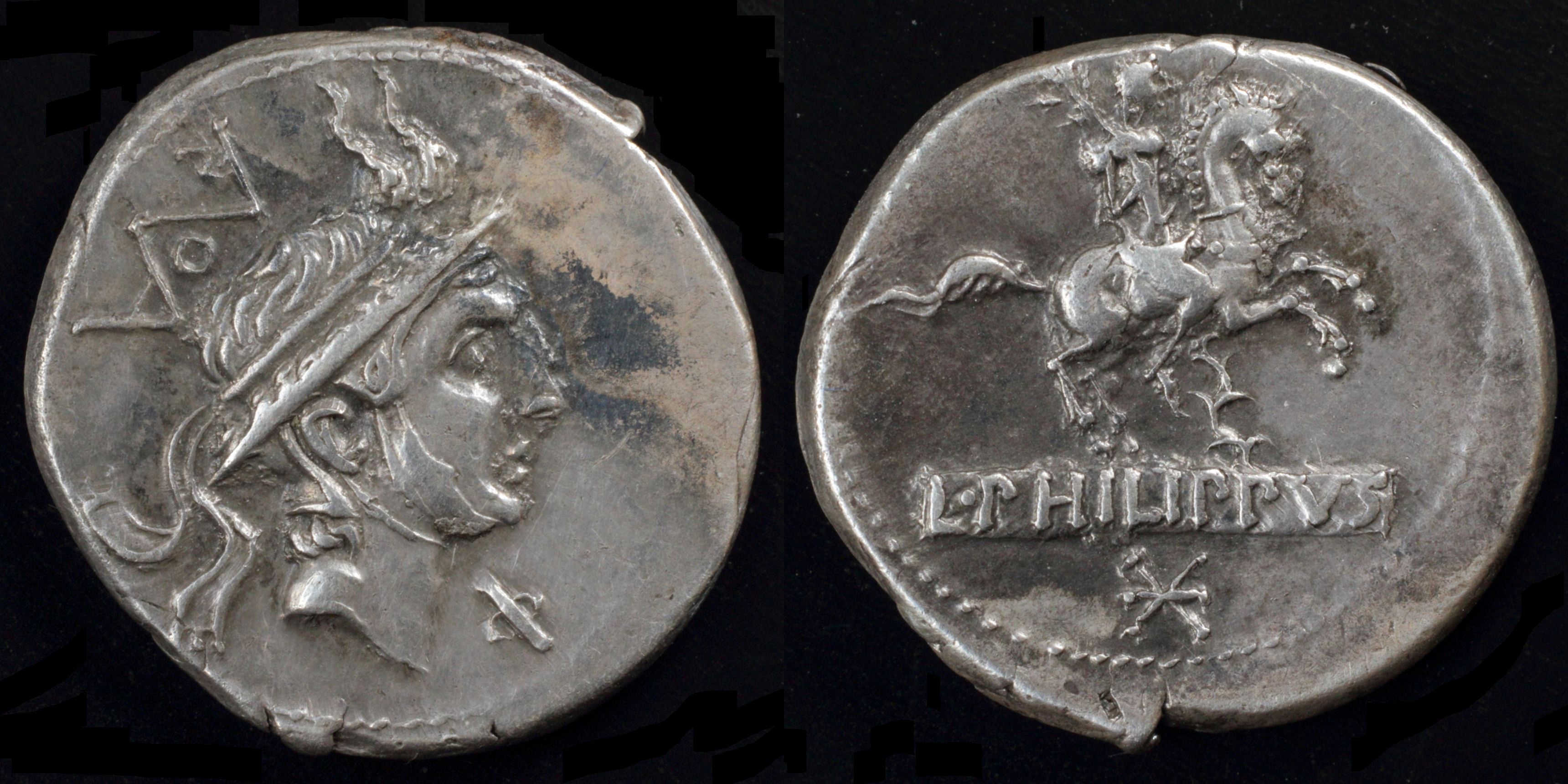Ok, so for some reason this ruler, mint, denomination or collection does not have a description yet - oops!
There are two possible explanations for this:
No description has been written yet
The property is incorrectly named
If the former, patience is key - this site covers thousands of entities, and all must have a manually created description written.
If the latter, try renaming the property - 'Domitian as Caesar' has no description, but 'Domitian' does.
There are two possible explanations for this:
If the former, patience is key - this site covers thousands of entities, and all must have a manually created description written.
If the latter, try renaming the property - 'Domitian as Caesar' has no description, but 'Domitian' does.


Obverse: helmet, diademed bust of Philip V king of Macedon right with goat's horns (ROMA) Φ
Reverse: equestrian statue right, holding laurel branch, flower below L·PHILIPPVS (XVI)
Diameter:
18 mm
Die Orientation: -
Weight: 3.9 g
Die Orientation: -
Weight: 3.9 g
Reverse shows equestrian statue of L. Marcius Q. f. Philippus who had concluded a peace treaty with Philip V of Maced in 197 BC.
Moneyer was good speaker and important politician. He was tribune 104 BC, consul 91 BC. He was against granting of citizenship to Roman allies what led to Civil war.
"... A final intriguing element on the coinage of the Philippi which unites it across half a century and the shift in emphasis from Makedonian to Roman royalty, is the flower which appears in the same place on the reverses of RRC 293 and 425 (beneath the hooves of the horseman and the equestrian statue of Q. Marcius Rex). Crawford (RRC, 308) calls attention to the Roman tradition about the conception of Mars (legendary ancestor of clan Marcia) when Juno was fertilised by a flower. But to accomodate the distinctively Makedonian theme of RRC 293, it might be preferable to see it as a lily and already understood as a generic symbol of royal blood. This notion seems to originate with the shift of the Achaemenid seat of government from Persepolis to Susa (literally, the city or place of the lily), and this flower is found on both Hasmonaean and Seleukid royal coinage in Hellenistic times before eventually finding its way into the Merovingian and eventually the Capetian regalia. ..." Mark K.P. from McCabe's sites.
Crawford 293/1, SRCV I 170, Sydenham 551, RSC I Marcia 12
